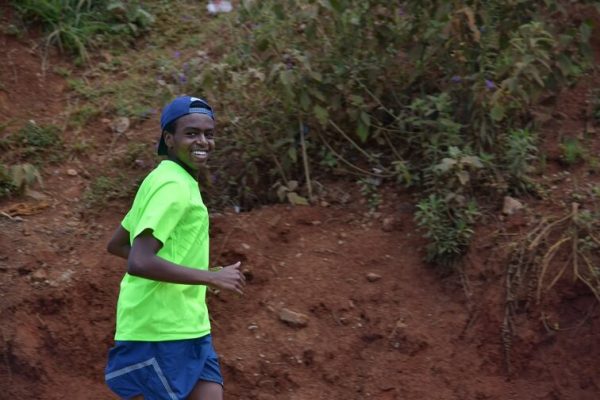

When the pandemic hit Kenya and we had to move to distant learning from our homes to help curb the spread of Coronavirus I knew I would have a lot of time to spare on something that I love. I had an affair with running. I felt most alive while running; sweat trickling down my back, my heart racing, and zooming past people as I run is always a joy. I’ve always wanted to form a habit of running constantly. I decided to give myself a challenge that would help me pass the free time and engage myself both mentally and physically. I decided to run 10km consecutively for 30 days, eventually covering 300km. Whether it rained, it was cold or I didn’t feel like waking up, it didn’t matter, I would have to run 10km every day.
I started the first few days by testing what was my comfortable pace and what was the fastest time I would take to cover the 10km. On the first day I covered the distance in 1 hour 5 minutes, which was a confident starter for the challenge. The discomfort got intense with the passing days and my time kept on changing. On the worst day I spent 1 hour 24 minutes, which still counts. On day 20 I finally ran my first sub-hour 10km within 57 minutes 2 second, I felt elated by this. With the remaining 10 days of the challenge, I tried to figure out how much more I could push myself and eventually, on day 29 I covered the 10km in 54 minutes 3 seconds.
I finally hit 300 km in 30 days! (303 to be precise) This challenge might seem small or big to some of you but to me, it was just what I needed. I’ve learnt so much about myself; how the mind works, pushing through the discomfort, and also losing some weight in the process.
Here’s the break down:
When planning to start the challenge, I was filled with fear and anxiety not knowing how I would cope with all the discomfort. Renowned Neurosurgeon Ben Carson talks of a formula of analyzing risks known as the ‘Best/Worst Analysis (B/WA)’ formula in his book Take the risk.
The formula is 4 simple questions:
In this context, in the 30-day challenge;
What is the best thing that can happen if I do this? I would gain a lot from the experience both physically and mentally.
What is the worst thing that can happen if I do this? I could get an injury from all the running.
What is the best thing that can happen if I don’t do it? I would not feel the constant pain and discomfort for the 30 days.
What’s the worst thing that can happen if I don’t do it? I would live with the regret of not trying and would not know how far I can push myself.
After asking myself these four simple questions, the pros seemed to outwit the cons and I started running. You can use the same four questions to analyse any risk or habit that you want to form in your life and find out the suitable steps to take. There’s no better feeling than when you’ve completed a task that you considered hard or impossible. The sense of joy and accomplishment is overwhelming. This has been me, every single day after finishing the 10 km run feeling accomplished.
The other side of discomfort is the joy of finishing and knowing that you are one step closer to achieving your goal. The habits we want in our lives are just a matter of mindset and how far are you willing to push yourself when it starts getting tough. When your body starts shutting down that’s when the real battle begins.
On to the next challenge…
Tuzo is a Bachelor of Arts in Communications (BAC) at Strathmore University

Thanks for the feature!
You are most welcome. Continue doing the great job you are doing.
I really like what you guys tend to be up too. This type of clever work and exposure! Keep up the fantastic works guys I’ve you guys to blogroll.
Perfectly pent articles, Really enjoyed examining.
you got a very fantastic website, Gladiolus I detected it through yahoo.
Well I sincerely enjoyed reading it. This tip procured by you is very effective for good planning.